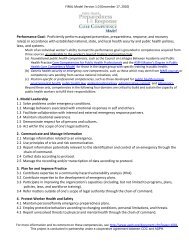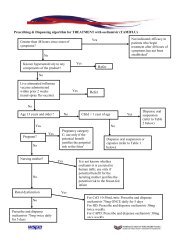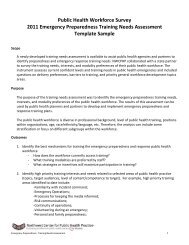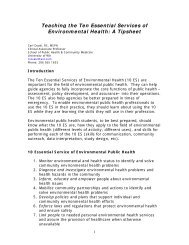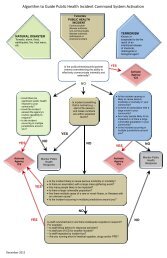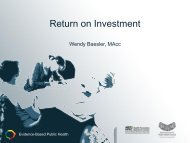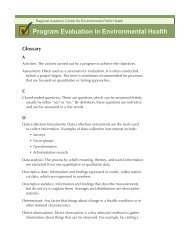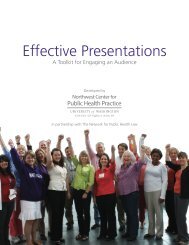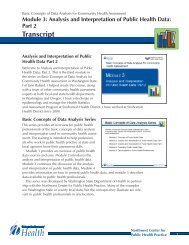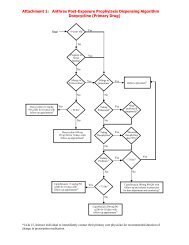Effective Adult Learning - Northwest Center for Public Health Practice
Effective Adult Learning - Northwest Center for Public Health Practice
Effective Adult Learning - Northwest Center for Public Health Practice
Create successful ePaper yourself
Turn your PDF publications into a flip-book with our unique Google optimized e-Paper software.
sessions at different levels of expertise—<strong>for</strong><br />
frontline workers versus managers, <strong>for</strong> example.<br />
Ideally, you should conduct a needs assessment prior to<br />
taking on a training project. This helps to identify gaps in<br />
learning and further targets the training <strong>for</strong> your audience.<br />
See Section 3: Tools and Templates, <strong>for</strong> a worksheet to help<br />
you do this.<br />
What are the learning objectives <strong>for</strong> this training?<br />
Your purpose should meld the key components of your<br />
audience, its training needs, its skill and knowledge deficits,<br />
and what you want to accomplish in your course. Think<br />
through what you want participants to learn as a result<br />
of your training. They should leave the training with new<br />
in<strong>for</strong>mation and/or skills that they didn’t possess prior to<br />
taking it.<br />
<strong>Learning</strong> objectives serve as a type of contract with your<br />
audience and help put the purpose of your training in<br />
concrete, measurable terms. If participants know the<br />
objectives from the beginning, they know what they are<br />
expected to learn. Objectives also clearly focus on the<br />
desired outcomes.<br />
Be<strong>for</strong>e you start developing your learning objectives,<br />
it’s important to determine the kind of learning your<br />
students will be gaining. Identifying the type of learning—<br />
Knowledge, Skills or Attitudes (KSAs)—will help you<br />
develop more specific learning objectives.<br />
For example, if your students’ learning involves knowledge<br />
retention and the development of intellectual skills, it is<br />
considered knowledge-based. If your students’ learning<br />
involves physical movement, coordination, and motor skills,<br />
it is considered skill-based. If your students’ learning deals<br />
with things emotionally like motivation and values, it is<br />
considered attitudes-based.<br />
Training Purpose<br />
The purpose of your<br />
training should be<br />
anchored in:<br />
• Training needs<br />
• Skill, knowledge deficits<br />
• What participants<br />
should know<br />
Types of <strong>Learning</strong><br />
Types of learning fall into<br />
three categories:<br />
• Knowledge: specific<br />
facts, patterns, concepts<br />
• Skills: practical abilities<br />
measured in speed,<br />
precision<br />
• Attitudes: realizing<br />
feelings, values,<br />
motivation<br />
www.nwcphp.org <strong>Effective</strong> <strong>Adult</strong> <strong>Learning</strong>: A Toolkit <strong>for</strong> Teaching <strong>Adult</strong>s | 6




